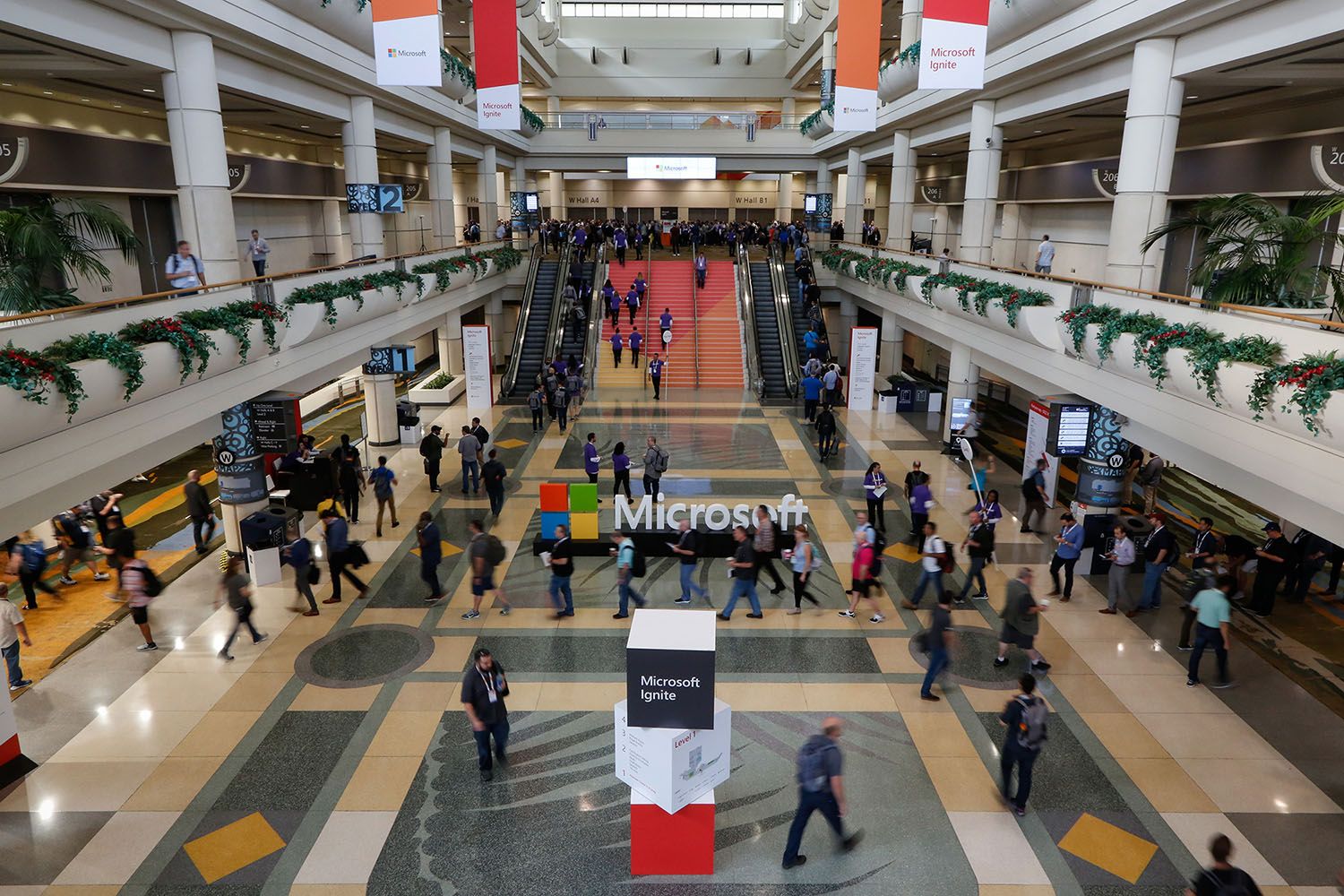Microsoft Ignite 2019: Cloud Native Highlights
Microsoft's yearly Ignite Conference took place last week and brought us a bunch of new announcements around Microsoft Azure. Here are my highlights from a cloud-native perspective summarized together with a list of session recording recommendations!

Microsoft's yearly Ignite Conference took place last week and brought us a bunch of new announcements around Microsoft Azure. Here are my highlights from a cloud-native perspective summarized together with a list of session recording recommendations!
☝️ Advertisement Block: I will buy myself a pizza every time I make enough money with these ads to do so. So please feed a hungry developer and consider disabling your Ad Blocker.
Azure Kubernetes Service (AKS)
Dev Spaces connect (Preview)
Dev Spaces connect runs and debugs a single service locally, while still being connected to other services and resources it depends on in the cloud. It also integrates with GitHub Actions to preview pull request changes in a live cluster.
Azure Diagnostics integration (preview)
AKS diagnostics generates diagnostics reports in the Azure Portal to spot and identify node issues, CRUD operations and identity/security management errors and gives tips and tricks to fix them.
Cluster Autoscaler (GA)
The cluster autoscaler horizontally scales clusters in and out when more capacity is required and removes them when they are no longer needed.
Multiple node pools (GA)
Multiple node pools let you use different VM sizes and configurations per node pool to run a variety of workloads in a single AKS cluster.
Availability Zones (GA)
Availability Zones let you protect applications and data from datacenter failures with redundancies across zones. AKS can now make sure that nodes run across separate update and fault domains in a single Azure datacenter.
Authorized IP addresses (GA)
Authorized IP addresses for AKS provides an extra layer of security by allowing customers to restrict access to their Kubernetes API server to a trusted network location.
New regions for AKS
- UAE North
- Switzerland North
- Switzerland West
- Germany West Central
Azure Arc for Kubernetes (preview)
Azure Arc lets you check compliance, enforce Azure Policies and push applications to clusters of all kinds even outside of Azure in on-premises or other cloud environments. This lets you govern all your distributed clusters at one place.
Official announcement | Session Recording
Azure Red Hat OpenShift
New hourly pricing
You can now provision clusters without committing to pre-purchasing Reserved Instances in advance. This allows us to provision clusters right away and spin up and down clusters without committing to a full year.
Azure Monitor Log Analytics integration
Azure Red Hat OpenShift clusters are now integrated with Azure Monitor Log Analytics, allowing customers to view their application and cluster logs in an integrated platform. The clusters will have an agent installed that will collect metrics and logs.
DevOps
Caching in Azure DevOps hosted pipelines (preview)
We can now cache dependencies and packages for future runs of cloud-hosted Azure DevOps pipelines, which has the potential to dramatically decrease build times.
What else?
Visual Studio Online
Visual Studio Online is amazing! Not only can you spin-up a full Visual Studio Code instance in the browser, but you can also configure a sandboxed dev environment with all the frameworks and runtimes you need and connect your local Visual Studio Code installation with it!
Official website | Session recording
Open Application Model (OAM)
Not exactly an Ignite announcement but introduced only a few weeks before, the Open Application Model is the result of a cooperation with Microsoft and Alibaba Cloud .It lets application developers describe which components their applications need (database, load balancer, web server...) and how these interact with each other in an abstract way. This application architecture description can be handed over to different providers (or Kubernetes with Rudr). The provider itself is responsible for the implementation of the OAM components.
Official announcement | Session recording
Distributed Application Runtime (Dapr)
Dapr (also announced a few weeks before Ignite) is a set of building blocks that aim to solve the most common challenges in building micro-services applications. It aims to let developers focus on writing business value instead of dealing with state management, messaging, service discovery, resilient networking, etc. Dapr usually comes as a side-car container that provides a HTTP/gRPC API which your application can call for common things instead of implementing them on their own. Dapr is open source, extensible and welcomes community additions.
Official announcement | Session recording
Session recommendations
Keynotes
Breakout sessions
- BRK2208 - Introducing Azure Arc
- BRK3098 - Mark Russinovich Presents the Future of Cloud Native Applications with OAM and dapr
- BRK4006 - Applying best practices to Azure Kubernetes Service (AKS)
- BRK3176 - Windows container and the Azure Kubernetes Service
- BRK2386 - A Cloud Native Approach to Securing Applications built with IaaS and PaaS
- BRK3327 - Azure Arc: Extend Management and Governance to any Infrastructure
- BRK3175 - Java on Azure: Building Spring Boot microservices
- BRK2195 - Getting started with deploying apps on Azure Red Hat OpenShift
- BRK2046 - Azure Monitor fundamentals: What, why, and how
- BRK2181 - Bosch: Helping to save lives with the wrong-way driver warning system using Kubernetes and cloud-native tech
- BRK2072 - Cloud native applications with .NET Core and Azure Kubernetes Service
Short sessions
- THR3035 - Developing cloud-native, worry-free applications in Azure
- MLS1003 - Visual Studio Online: Everything you need to know
- THR2307 - Supercharge your desktop app DevOps pipeline with Azure DevOps and App Center
- THR2157 - Deploy apps to Kubernetes using CI/CD in 20 minutes
- THR3127 - Serverless Kubernetes with Azure Functions and Azure Kubernetes Service (AKS)
☝️ Advertisement Block: I will buy myself a pizza every time I make enough money with these ads to do so. So please feed a hungry developer and consider disabling your Ad Blocker.
